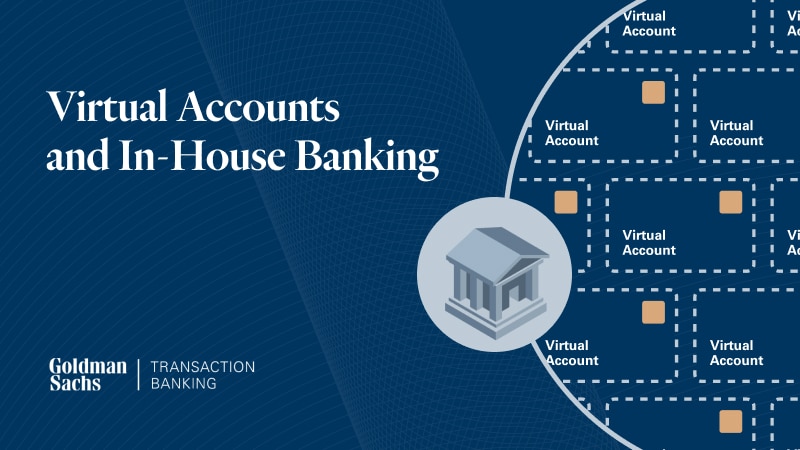Virtual Accounts and In-House Banking

By Mark Smith - Global Head of Liquidity Products, Transaction Banking
In-house banks (IHBs) and virtual accounts are powerful tools in the treasury space that have historically been more popular outside the U.S. Yet, both of these solutions present opportunities to U.S. treasurers, and form a potent combination that can create big advantages for organizations. Let’s take a quick look at what these are – and the potential they hold.
IHBs – These internal structures centralize and insource a range of treasury functions that typically are carried out throughout an organization or performed individually by external banks. A typical IHB contains the following basic elements:
- Centralized funding for the entire group;
- Risk management, including foreign exchange (FX), interest rate, and commodity hedging;
- Intercompany FX netting;
- Liquidity management and cash pooling;
- Working capital management, including centralized payments and receivables management;
- Intercompany bank accounts that reduce the need for external bank accounts.
To drill down on one of the benefits, an IHB can perform an important role in centralizing payables and receivables through shared service centers called payment and receipt factories. A payment factory is a centralized hub that manages an organization’s payment processes and flows. It delivers greater efficiency through better automation, better straight-through processing, better reconciliation, and reduced FX costs because cross-currency payments can be consolidated. A receipt factory delivers similar efficiencies to the accounts receivable process, while also improving working capital through faster cash application.
Virtual accounts – Functioning essentially as subledgers that exist within a traditional bank demand deposit account (DDA), virtual accounts divide and organize the bank account data. This is done by assigning each incoming and outgoing transaction a unique identifier, or virtual account number, which allows the bank’s virtual account engine to attribute all payments to a discreet virtual account. Each virtual account therefore has an opening and closing balance and records all relevant incoming and outgoing transactions. Crucially, the total of all the virtual accounts always equals the total on the physical account. So virtual accounts report the same information that a physical account reports; they are just subledgers within the account.
A key feature of bank-issued virtual accounts is that they can be configured as clearing-recognized account numbers. In other words, they can have the same structure as a physical account. Individual customers can therefore be issued their own unique virtual account number. This can greatly assist with receipts reconciliation because remittances from that customer are recognized by the virtual account engine and posted, simultaneously, to the correct physical account and the customer’s virtual account.
This is better than issuing customers with a physical account number and a unique reference number, because the reference number can be omitted or transposed. When that happens, manual intervention will be required because the payment will still post to the physical account, but the remitter will not be automatically known. When the virtual account number is the customer reference, by contrast, the remittance will either straight-through-process to the correct virtual account or be rejected.
IHBs + virtual accounts – Because of their ability to segregate and organize data within one physical account, virtual accounts can sit at the heart of an in-house bank, operating as the intercompany ledgers between the Treasury entity and other group companies. While virtual accounts track intercompany transactions and descriptions, they can also administer intercompany interest, receivables and payables, further reducing the burden on the treasury team.
In-house banks are an extremely powerful treasury solution that can drive significant efficiencies throughout the organization. Although the effort required to set up an IHB shouldn’t be understated, bank-issued virtual accounts can help with implementation, while delivering ongoing improvements to straight-through processing and straight-through reconciliation.
For more information on virtual accounts and In-House Banks, contact a treasury specialist at Goldman Sachs Transaction Banking at gs-txb@gs.com.
Learn more about Transaction Banking


